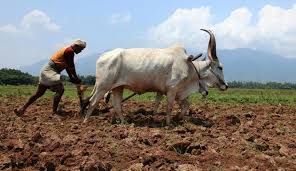W.B.C.S. Mains Examination Notes On – Mutation Breeding – Agriculture Notes.
Normal breeding involves cross breeding, from the parents, through a multi-generational process that may take four to five years to eliminate an unwanted genome and develop the sought-after traits before trial crops are tested, adding more time.Continue Reading W.B.C.S. Mains Examination Notes On – Mutation Breeding – Agriculture Notes.
Mutation breeding is based on selfing mutants until the induced character has a stable expression in the advanced mutant generations.
Plant breeding is estimated to have begun 9,000 – 11,000 years ago and mutation breeding is simply a new device in the breeder’s toolkit. Mutation breeding has been used since the 1930s. It’s a means of accelerating the process of developing different traits for selection, such as disease resistance, tolerance to harsh growing conditions, and other valuable agronomic traits. It does not involve gene modification, also known as gene splicing. Mutation breeding uses a plant’s own genetic resources mimicking the process of spontaneous mutations, that’s under way in nature all the time, the basis of evolution. Importantly it broadens biodiversity.
How it works: seeds, cuttings, or the shredded leaf of a plant (tissue) are irradiated. The irradiated material is either planted or cultivated in a sterile rooting medium and individual plants picked out, and examined for their traits.
Mutation is a heritable change in the genetic material of living organisms and therefore a major driver of species diversity and evolution. Mutation may be spontaneous or induced, and mutants that are better fitted to their environment (natural or man‐made) have a selective advantage.
Mutation has been a major factor in bringing wild species into domestication and agriculture. Purposeful mutation in plant breeding has been a highly successful strategy. There are currently over 3,220 officially released mutant cultivars in over 210 plant species. Mutant traits can be produced for most if not all breeding goals and include yield, quality, stature, disease, pest resistance, tolerance to abiotic stresses, postharvest degradation, and novel end‐user characters. It provides a background to plant mutation breeding (impact and challenges), strategies involved, basic and advanced techniques, and provides a critical review of this approach compared with other methods for the genetic improvement of crops.
The various mutagens (physical, chemical, and biological) are described. Currently, the vast majority of mutations used in plant breeding and crop production are derived from treatments of physical mutagens. Their effects (biological consequences) and their utility (advantages and disadvantages) are discussed. Furthermore, standard procedures are described for the optimization of mutagenesis and subsequent handling of mutated materials.
Mutation breeding, sometimes referred to as “variation breeding“, is the process of exposing seeds to chemicals or radiation in order to generate mutants with desirable traits to be bred with other cultivars.
Plants created using mutagenesis are sometimes called mutagenic plants or mutagenic seeds. From 1930 to 2014 more than 3200 mutagenic plant varieties were released that have been derived either as direct mutants (70%) or from their progeny (30%).Crop plants account for 75% of released mutagenic species with the remaining 25% ornamentals or decorative plants.However, although the FAO/IAEA reported in 2014 that over 1,000 mutant varieties of major staple crops were being grown worldwide, it is unclear how many of these varieties are currently used in agriculture or horticulture around the world, as these seeds are not always identified or labeled as having a mutagenic provenance.
Please subscribe here to get all future updates on this post/page/category/website


 Toll Free 1800 572 9282
Toll Free 1800 572 9282  mailus@wbcsmadeeasy.in
mailus@wbcsmadeeasy.in



















































































































